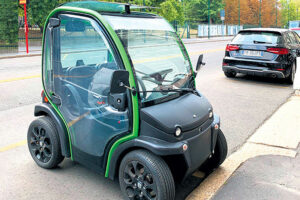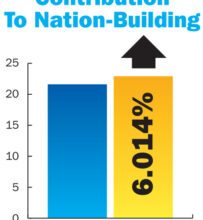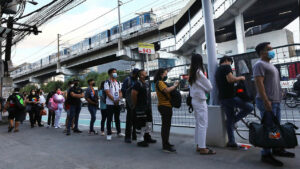Mighty morphin’ mobility

THE LAST COUPLE of years have shown us that our motoring landscape is poised to undergo significant transformations. Quite a lot, in fact, that people in the industry no longer choose to refer to motoring as “motoring,” but instead call it mobility. This evolution is helped along by a combination of factors, such as environmental imperatives, general technological advancements, urbanization, and shifting consumer preferences, to name a few. From the democratization of shared mobility services (I’m looking at you, Uber and Grab), to the rise of electric vehicles (thanks to major advancements in battery technology and its mass production price), several key global and regional (ASEAN) trends are shaping the future of how we move.
Let’s review some of them.
Perhaps the most talked-about ongoing transformation in the realm of mobility is the electrification of vehicles. This movement is mainly driven by the global effort to reduce carbon emissions and combat climate change. Combined with major advancements in battery technology and its now lower cost of production, EVs are fast becoming viable alternatives to traditional internal combustion engine (ICE)-powered vehicles, not to mention that there is growing infrastructure of charging stations — although still a bit slow in rolling out.
Meanwhile, it really helps that governments around the world are following each other in implementing policies to help incentivize the use of EVs. Among these incentives are subsidies and tax reductions; though the implementation of stricter emissions regulations also indirectly impact traditional ICE vehicles.
Faster urbanization trends also affect people’s choices for mobility. Sometimes, it is far easier for people to not own cars, especially in congested areas, and this paves the way for the growth of shared mobility. With the new concept of mobility as a service (MaaS), there now exist platforms that integrate various modes of transportation. They integrate ride-hailing, bike-sharing, and public transit into a seamless, on-demand service that is accessible through a single digital platform. This may deliver greater convenience and affordability, while simultaneously helping to reduce pollution and transportation congestion.
The recent COVID-19 pandemic has also catalyzed major shifts in movement patterns. As we all know, work-from-home (WFH) arrangements have now become more prevalent, and there also seems to be a greater emphasis on active transportation modes such as cycling and walking. As big cities begin to reevaluate their urban planning to prioritize renewable energy and more sustainable choices, new opportunities open for mobility solutions that put a premium on health, equity, and environmental sustainability.
Then there is the continuing development of autonomous vehicles. I first heard about these over 10 years ago and, at the time, it was still controversial whether societies would allow AI (artificial intelligence)-driven vehicles to self-drive. These days, a lot of production vehicles already have some form of autonomous driving incorporated into its safety systems. It’s been a huge leap in the intervening years; in some parts of the world, autonomous vehicles are already allowed to ply certain roads (experimentally) within a controlled environment.
Furthermore, I have also seen a surprisingly fast rise in micro-mobility solutions in both Europe and Southeast Asia. Perhaps that is because they are convenient and affordable eco-friendly options for short-distance travel. They are compact and agile, and that makes them great for navigating crowded urban spaces. They are especially handy for first-mile and last-mile connectivity with other forms of transport. And as new cities invest in more infrastructure to accommodate micro-mobility vehicles for its inhabitants, it will surely surge further in popularity and play a growing role in shaping the future of urban mobility, especially in our region.
Speaking of these kinds of “smart” cities that support new-age modes of transport, we can foresee the expansion of public transport networks within them. Because the truth is, these are really more practical, efficient, sustainable, and inclusive. It is not difficult to understand how intelligent transportation systems and a sophisticated public transportation network can enhance the quality of life of its residents while simultaneously supporting economic growth and the health of its environment.
Therefore, I guess we can say that the future of mobility in Southeast Asia will be characterized by a shift towards more sustainable, efficient, and smart mobility solutions that will be tailored to address the region’s unique challenges.




